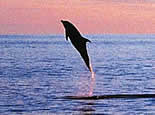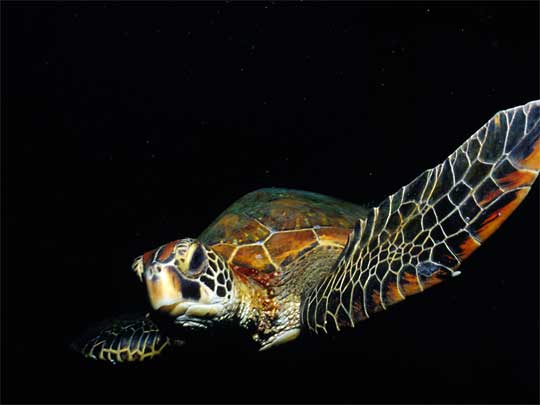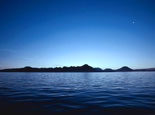Into the Wilderness at Galapagos Islands
|
|
|
The Galápagos Islands offer some of the best wildlife viewing in the world, not only because the animals themselves are beautiful and interesting but because they are virtually fearless of humans. Through a quirk of evolution, large predators failed to evolve here, meaning, for example, that the famous blue-footed booby will perform its awkwardly elegant two-step mating dance right under your nose, oblivious to your camera. Mockingbirds will hop onto your shoes. Sea lions will do figure eights to show off their swimming prowess as you snorkel among them. The local penguins are, admittedly, a bit aloof, but even they aren't above using a snorkeler as a human shield as they attempt to sneak up on schools of fish. The giant Galápagos tortoise (Geochelone elephantopus) is the most distinctive animal on the entire archipelago. Fifteen subspecies of giant tortoise have been recorded.
There are 13 major islands, six minor islands and 40 or so smaller rock formations and reefs scattered through 17,000 square miles of ocean. The islands' geographic isolation, over 960km (600 miles) off the coast of Ecuador, has led to the evolution of about 750,000 seabirds, 22 species of reptiles (tortoises, marine turtles, lizards/iguanas, geckos and snakes), and a uniquely exotic marine community. This, combined with the animals' fearlessness of humans, played a key role in Charles Darwin's development of the theory of natural selection. The wildlife here, which so beguiled him and Herman Melville in the 19th century, is no less astonishing now than it was when they visited.
The Galápagos Islands were formed over 5 million years ago by volcanic eruptions. Today, the most active islands are Fernandina and Isabela, the westernmost islands, although several others have ongoing volcanic activity. Only five of the islands are populated -- Santa Cruz, San Cristóbal, Floreana, Isabela, and Baltra.
If there is one place in the world that every diver dreams of, it is the Galapagos. On most dives you will see several hundred large marine animals and it is not uncommon to see sea lions, turtles, numerous different sharks, manta rays, huge schools of eagle and/or golden rays, whales and thousands of dolphins. Between dives you can snorkel with penguins or walk right up to a tortoise. Few places on earth offer such unique variety.
Every island in the Galápagos has its own allure. The more time you have, the richer your experience will be, but even if you have only a few days, with proper planning you'll come home with a lifetime of memories. Here's a list of what each island has to offer.
|
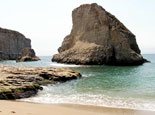 |
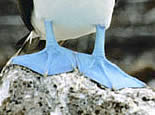 |
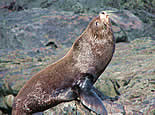 |
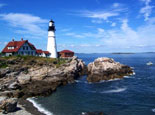 |
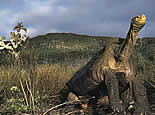 |
|
Santa Cruz
The main city here, Puerto Ayora, is a bustling and attractive little burg, with a variety of small hotels, restaurants and gift shops. If you're looking for a luxury getaway, this island offers the only such choices, with both the Royal Palm Hotel and Finch Bay Hotel. This island is also home to the Charles Darwin Research Station, where you can observe tortoises firsthand. Tours of the island include stops at Los Gemelos (The Twins), two sinkholes that stand side by side. As you walk around Los Gemelos, you will have a good chance of spotting the beautiful vermilion flycatcher. At a farm in the highlands you can see tortoises in the wild. It's exciting to see these enormous creatures crawling about. Make a stop at the lava tubes, where you can wander though underground tunnels created by the movement of hot lava. On the north side of the island is Cerro Dragon, which is a great place to see the unique Galápagos land iguana.
Bartolomé
Bartolomé (or Bartholomew) is famous for its dramatic vistas and barren volcanic landscape. The most common anchorage here is near the oddly shaped Pinnacle Rock. From here, you can climb 372 steps of a wooden walkway to reach the top of an extinct volcano. The vigorous but technically easy climb is a lesson in volcano geography, with cooled-off lava flows and parasitic spatter cones clearly visible along the route to the main cone. On the way up, you will certainly see lava cactuses and lava lizards. The panoramic view from the lookout up top is beautiful, with Pinnacle Rock below you. This island has one of the larger colonies of Galápagos penguins, and many snorkelers have spotted penguins off this island.
San Cristóbal
The downtown Malecón, or boardwalk, of the island's main town, Puerto Baquerizo Moreno, features a string of bayside restaurants, cafes, and gift shops. The main attraction on the island is the Centro de Interpretación (Interpretive Center), a small, interesting museum with exhibits on the natural, human, and geological history of the island. If you spend any time on San Cristóbal, you will probably stop at El Lobería, a beach with sea lions, red crabs, and colorful lava gulls. It's also worth visiting La Galapaguera de Cerro Colorado, a natural giant-tortoise reserve. If you sail into or out of Puerto Baquerizo Moreno, you will probably pass through Kicker Rock -- a unique rock formation set about 1.5km (1 mile) offshore. Take note of San Cristóbal's fishing and commuter craft; many are ringed with strands of barbed wire to keep off sea lions. Boats without the barbed wire almost always have one or two of these large sea mammals lounging around on the aft deck or sunning on the prow.
Santiago
Also called James Island, Santiago was a major base where early buccaneers and pirates stocked up on fresh water and food. Santiago is also a case study in the potential destruction caused by introduced species. Supposedly a couple of pairs of feral goats, left here as a future source of food by buccaneers in the 18th century, reproduced to the point where they numbered over 100,000. Most of the sea lions in the Galápagos are California sea lions. But on Santiago island, you will have the chance to see the only endemic species of sea lion in the Galápagos, which is incorrectly called the Galápagos fur seal. After you see the fur seal, you will have an opportunity to take advantage of the excellent snorkeling here. If you're lucky, you'll see sea turtles. The island is also full of coastal birds such as great blue herons, lava herons, oystercatchers, and yellow-crowned night herons.
Española
May through December, albatrosses settle down here to mate and take care of their young. In May and June, if you arrive early in the morning, you can witness the beak-cracking mating ritual of the albatross. Later in the season (Sept-Dec), you can see the little chicks. There must be some sort of aphrodisiac on this island because this is also a great place to see blue-footed boobies doing their mating dance, where the male extends his wings and lifts his beak at his prospective mate. If the female likes what she sees, she mimics her suitor.
Fernandina
This is the westernmost island in the archipelago, and one of the best for wildlife encounters. The largest colony of marine iguanas live here. These cold-blooded animals hug and cuddle with each other to warm up after swimming. Flightless cormorants also inhabit the island; even though these birds can't fly (they are the only flightless cormorants in the world), they still dry their wings in the sun, just like their flying ancestors used to do millions of years ago.
Isabela
Just to the east of Fernandina, this is the largest island in the Galápagos, formed by the volcanic activity and eventual joining of six different volcanoes -- five of which are still active. Darwin's Lake provides an excellent backdrop for dramatic photos of the sea. You should be able to spot the land iguanas here, and you can take a long hike to a scenic point, from which you can see for miles. Isabela is particularly prized by bird-watchers; owing to its size, the island has a high species count. One of the common species here is the flamingo, found in its namesake Pozo de los Flamingos (Flamingo Pond), close to the main town of Puerto Villamil. Among the main attractions on Isabela is El Muro de Lágrimas (The Wall of Tears), a stone wall that was used as a torture mechanism for prisoners kept in a penal colony here during the mid-20th century. In town, you can also see graffiti that dates all the way back to 1836.
Rábida
Rábida, also known as Jervis Island, has a beautiful red-sand beach that is almost always heavily populated with sea lions. If you get too close to a female or child, the local bull male will probably make his presence known. Just behind the beach is a small salt-water lagoon that is a good place to see flamingos. A small loop trail leads to the top of a hill, with some good views of the island's coastline. The waters off Rábida offer the best snorkeling in the islands. You can find yourself swimming simultaneously with sea lions and penguins here.
Genovesa (Tower)
Home to Darwin Bay and the popular hiking trail known as "Prince Philip's Steps," Genovesa is located on the far northeastern end of the archipelago. This island is also home to the largest colony of red-footed boobies on the archipelago. On another side of the island, you can see masked boobies and storm petrels. If you're lucky, you might spot the elusive short-eared owl -- since these guys don't have predators, they are the only owls in the world that are diurnal.
Floreana
This small island, the first to be inhabited, it is rich in lore and intrigue. Today, some 100 people live on this island, which is seldom visited by tourists. If you do come here, be sure to stop at Post Office Bay, where a barrel full of letters and postcards sits on the beach. It's a tradition begun by early whalers: If you see a letter or card addressed to someone in your town or country, you are supposed to carry it and post it from home. In exchange, feel free to leave a letter or postcard of your own for someone else to return the favor.
|
|
Visit also: |
|
Celebrity Cruises has some very interesting itineraries onboard it's Celebrity Xpedition ship that cover most of the islands in various months throughout the year and from 7-days onwards! To learn more about cruise possibilities to the Galapagos Islands or for making your booking arrangements to go on this extraordinary wildlife adventure, please contact us and we will be happy to assist in any way possible. |

